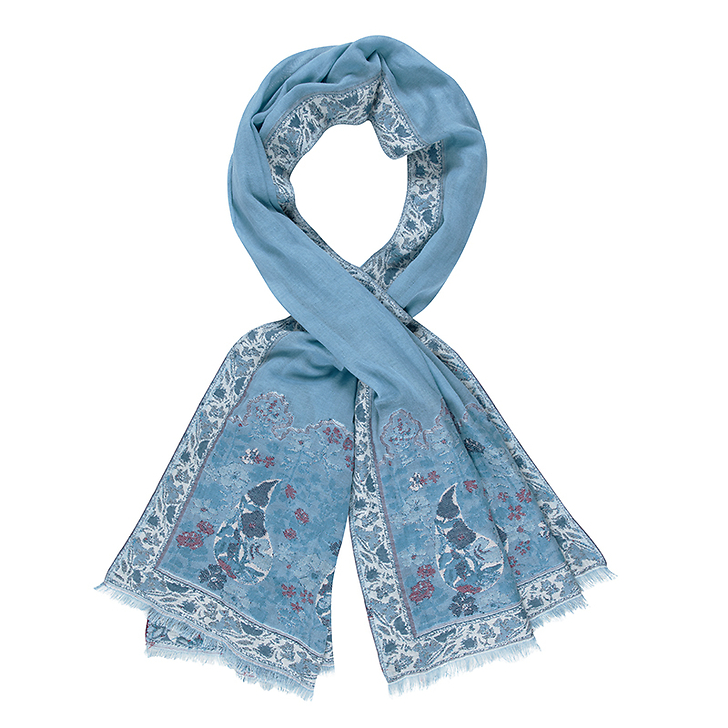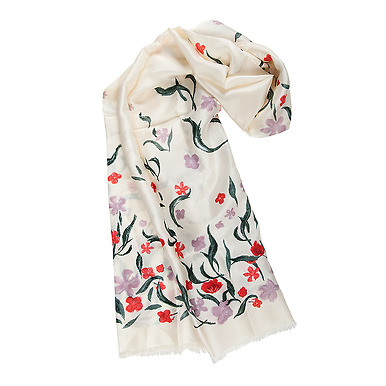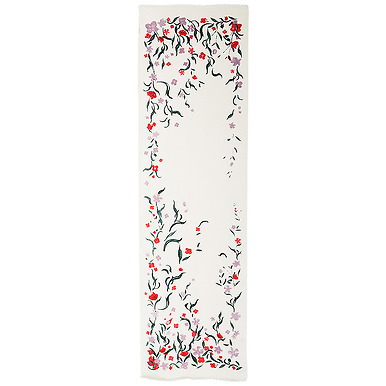Louise Shawl
CH000736
This shawl is inspired by the work of Louise Hersent, born Mauduit "Portrait of a young woman wearing a white dress, with a cashmere shawl, leaning against a meridian", 1834. Private collection.
Under the Directory, the Consulate and then the Empire, the shawl became the essential accessory to a quality...
Read more
This shawl is inspired by the work of Louise Hersent, born Mauduit "Portrait of a young woman wearing a white dress, with a cashmere shawl, leaning against a meridian", 1834. Private collection.
Under the Directory, the Consulate and then the Empire, the shawl became the essential accessory to a quality woman's wardrobe. Rare and sought-after, shawls are made from expensive raw materials. Thus, the cashmere shawl played a considerable role in the upper and wealthy Parisian bourgeoisie and could be passed on as a possession from mother to daughter. The future Empress Josephine owned several of them.
With its elongated shape, the shawl was used in many ways: thrown over the shoulders, tied around the neck, crossed around the chest or tied around the head like a turban.
This shawl is inspired by the Paisley pattern of Persian origin called Boteh or more commonly "paisley pattern". It is often found woven on shawls, in pairs, mixed with leaves and creepers. It then symbolises the union of woman and man, taking its inspiration from Chinese yin and yang.
Jacquard woven pattern
70 x 185 cm
100% coton
Close
Login to see prices
Sold by GrandPalaisRmn








